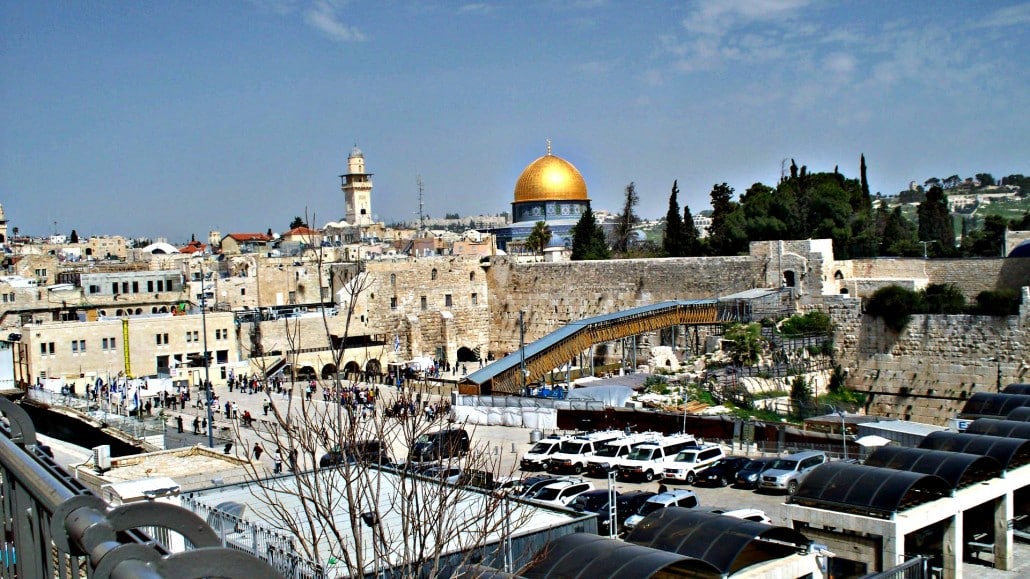
One of the oldest cities on the globe, Jerusalem is holy to three religions: Judaism, Christianity and Islam. My first glimpse of the historic and much-venerated city came after dark through a bleary-eyed glaze, the result of a 10.5-hour flight on El Al, the Israeli airline, from JFK in New York to David Ben Gurion Airport, 25 miles from Jerusalem.
I recall leaving the flat plain at the airport near sea level and eventually beginning an ascent by car up to the hilly city, perched at 2,490 feet at its highest point. Not only lofty, the city is a maze of streets that I found bewildering. Thank goodness for my guide, who really knew his way around.
With jetlag setting in, I was glad to check into my hotel and head for bed, leaving the sightseeing for the next day. Bright and early, after one of the massively bountiful breakfast buffets offered by many Israeli hotels, I headed for the Wailing Wall, a fragment of the Western Wall built by Herod the Great as part of the expansion of the Second Temple.
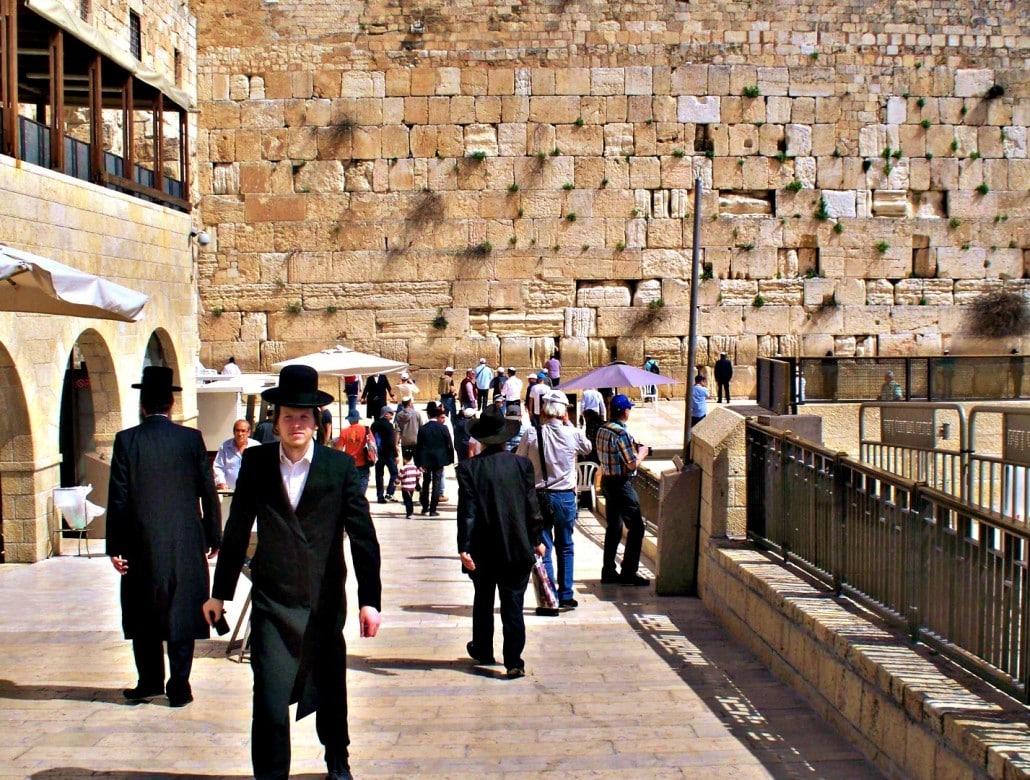
Temple Mount, the Wailing Wall and Old Jerusalem
From my car I could see the entire Temple Mount, a 37-acre plateau where believers say that Jehova asked Abraham to sacrifice his son Isaac, where Solomon built has massive temple, and where the prophet Muhammad ascended to heaven to talk to God. Currently, the golden Dome of the Rock, built in 692 AD as an Islamic mosque over the site of the Jewish temple, dominates the plateau.
After the temple’s destruction, Jews began visiting the wall to mourn its ruin by the Romans. Today, countless people visit each year to pray to “the ear of God.” Some place small pieces of paper in the crevices as special entreaties, with as many as a million notes left in the wall each year.
In the mid-19th century, excavations of the wall began but were halted during World War I. Resuming after the Six Days War in 1967, new discoveries were made including ritual baths (mikveh), ancient water pits, a buried commercial street, and the wall’s original huge foundation stones, the largest of which measures 45-feet long, nearly 10-feet tall and 11-feet wide and weighs 570 tons. The stone is considered to be the heaviest ever lifted by humankind without powered machinery.
Guided tours of the excavated tunnels, which run along 488 meters of the Western Wall, are offered daily, last 75 minutes, give information on ancient Jerusalem and its archaeology and history, and exit at the first station of the Via Dolorosa.
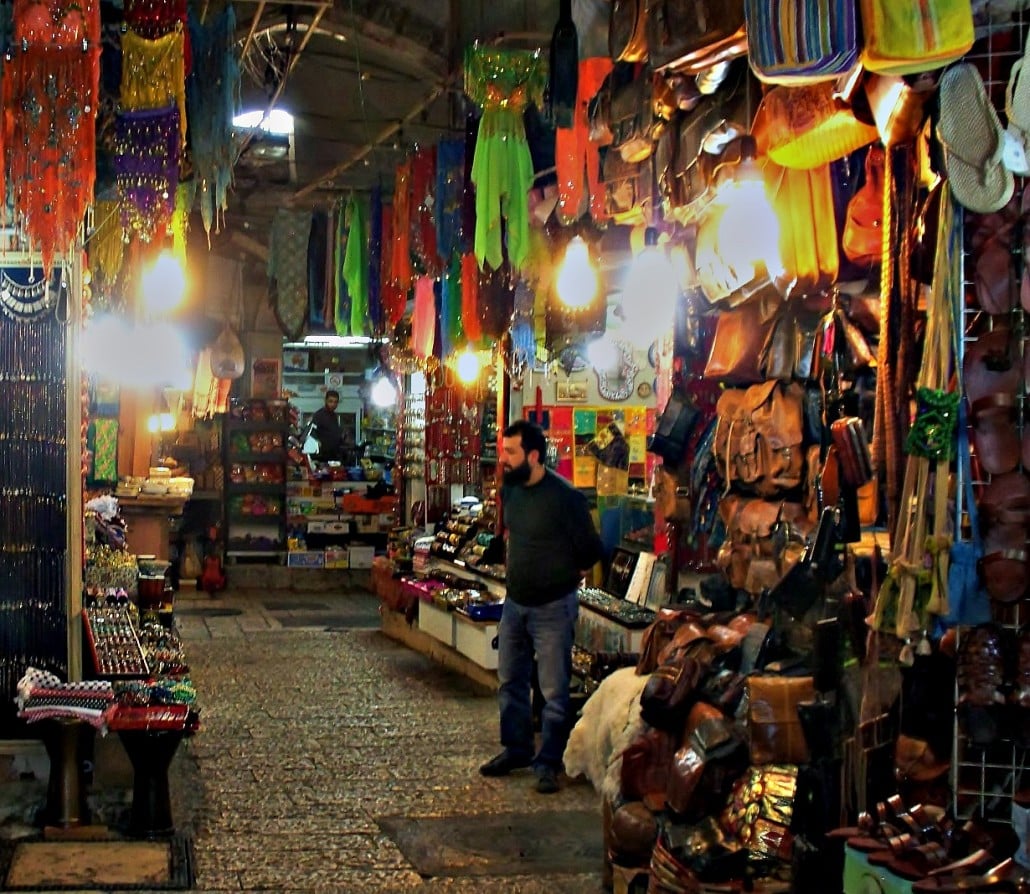
The Way of the Cross, the route Christ walked through Jerusalem on his way to his crucifixion, begins at the place where he was condemned to death, has 14 stops—each identified by a medallion with Roman numerals)—and goes part-way through the Arab market or souk in the Moslem Quarter.
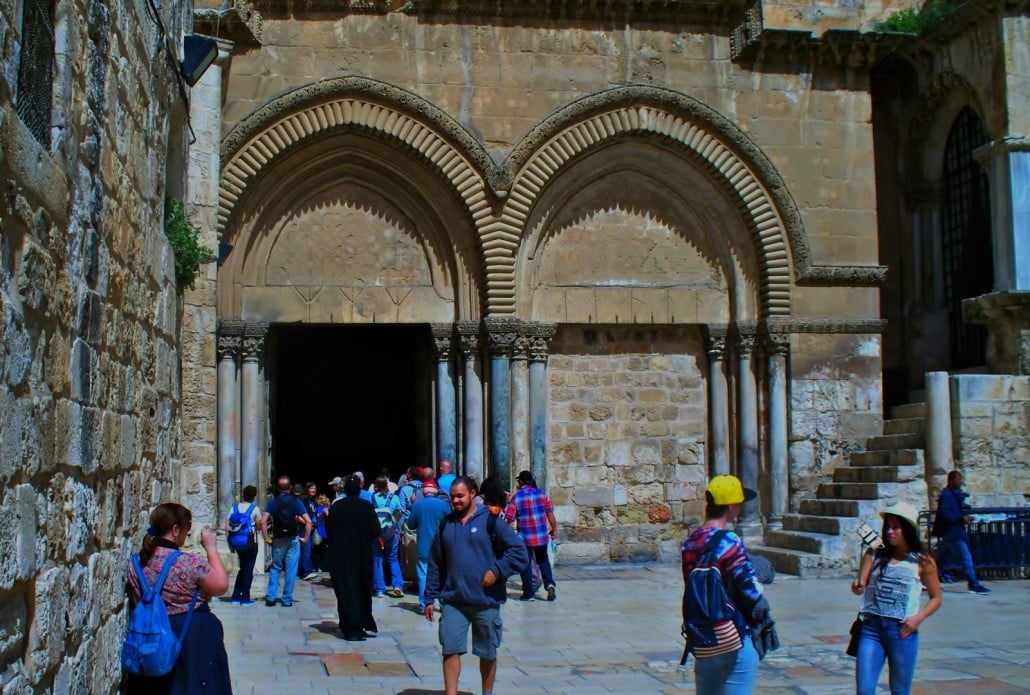
The Via Dolorosa ends at the Church of the Holy Sepulcher, built over both Golgotha’s and Christ’s tombs. Regarded as the most sacred site in Christendom, the church dates back to at least the 4th century and is shared by Roman Catholic and Greek and Armenian Orthodox denominations. I was surprised to learn that Protestants regard another site known as the Garden Tomb, unearthed in 1867, as the true burial tomb of Jesus, located outside the Damascus Gate in the Third Wall built around Jerusalem.
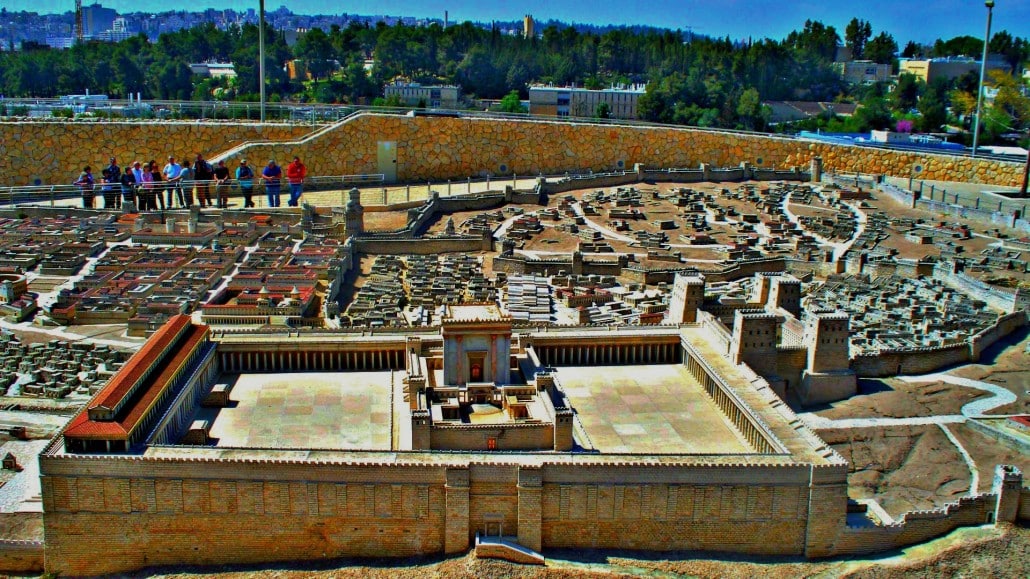
The Israel Museum
Later, while traveling by car to the Israel Museum, located on a high hill, I began to appreciate just how beautiful Jerusalem really is. Many of the city’s buildings are made of Jerusalem limestone, which gives it a pleasant visual unity, and large sections of the town are nicely landscaped and devoid of garish advertising signs and fast food joints. Add a Mediterranean climate, great architecture, Biblical and other interesting sites, great restaurants, plenty of cultural offerings, and a stunning topography, and you get a very livable metropolis.

The Israel Museum is one of the largest museums in the Middle East. Its collection of nearly 500,000 objects dates from prehistory to the present day. One highlight is a massive outdoor model of Jerusalem at the time of the Second Temple that covers nearly an acre and is built on a 50-to-1 scale.
The model is sited adjacent to the Shrine of the Book—the repository for the Dead Sea Scrolls, the oldest Biblical manuscripts in the world. The shrine is topped by a large white dome with two-thirds of the remaining building, shaped like the pots in which the scrolls were found, located underground.
Inside, visitors can view one of the scrolls, rotated for display every three to six months. Now in its 51st year, the museum is the largest cultural institution in Israel, covers 20 acres and features “Architectural,” “Fine Arts” and “Jewish Art and Life” wings as well as a “Sculptural Art Garden.”
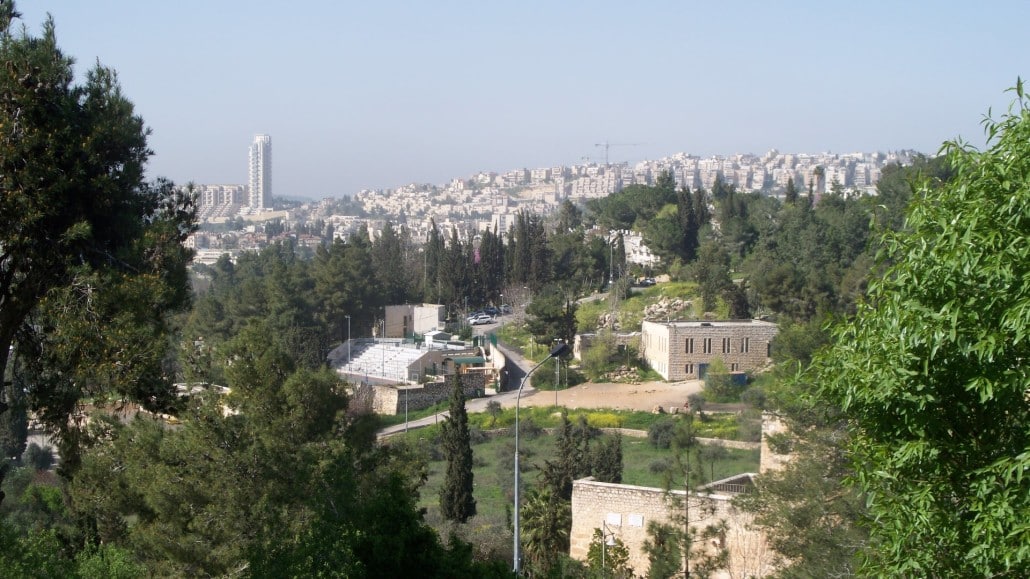
Yad Vashem, the Jewish peoples’ Holocaust memorial
Day two of my Jerusalem visit began on a somber note at Yad Vashem, the Jewish peoples’ memorial to the Holocaust. Perched on the Western slope of Mount Herzl, 2638 feet above sea level, the grounds of the museum are wonderfully landscaped and lead to a series of modern, architecturally impressive buildings starting with the Holocaust History Museum, which chronicles with signage and photos the experience of European Jews starting with the rise to power of Hitler and ending with the struggle of survivors to reach Israel.
At the end of the museum, the Hall of Names is meant to memorialize the six million Jews who perished in the Holocaust. The top section is a cone-shaped dome lined with the photos of Holocaust victims and fragments of testimony. The bottom section is filled with water and reflects the upper cone, a touching way of commemorating victims who remain unknown.
Besides providing a wonderful panoramic view of Jerusalem, other Yad Vashem highlights include: a synagogue, the Hall of Remembrance with its stately eternal flame in the middle of a black basalt floor engraved with the names of Nazi extermination and concentration camps, and the Garden of the Righteous, meant to honor non-Jews who risked their lives to save Jews from the Holocaust.
Perhaps the most moving of all the sites is the Children’s Memorial, a darkened hall lit by flames of memorial candles meant to represent the 1.5 Jewish children who were victims to the Holocaust. As patrons make their way around a circular pathway, the photos of some of the children glimmer in the candlelight while a recording announces the names and countries of origins of some of the young victims.
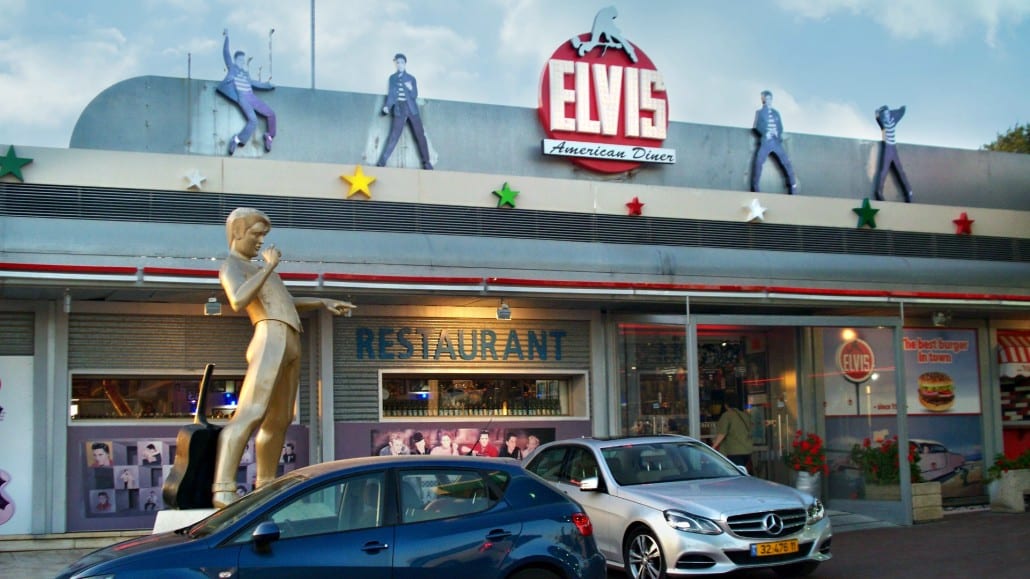
Ein Karem and Abu Gosh
Before making our way to the West Bank Arabic town of Abu Gosh for dinner, we stopped at the charming village of Ein Karem, the birthplace of John the Baptist, located about five miles from Jerusalem.
Although the town dates back to antiquity, one major tourist attraction is the Church of the Visitation, completed in 1955 over the ruins of a much older church. The site marks the spot where Christ’s mother met with her cousin, Elizabeth, the mother of John the Baptist. A second sacred Ein Karem site commemorates John the Baptist’s birthplace with a church built in his name. Christians have regarded the site as holy for more than 1,500 years, and remains of previous edifices can be seen among the current structure, rebuilt in 1674.
In Abu Gosh, the Elvis American Diner came completely as a shock. The last thing I expected to see was a large golden statue of Elvis standing in front of a chrome and glass diner with slues of Elvis memorabilia inside to go along with a menu that features burgers and fries.
While a fascinating place to visit, we opted for Naura Restaurant in the town titled “the hummus capital of Israel.” Our host plied us with his delicious hummus as well as tabouleh and an assortment of cooked vegetable plates, but the prize of the meal turned out to be a spectacular domed platter spiked with shish kebob spears that impaled chunks of beef, lamb and grilled tomatoes.
In Part 2: Masada, the Dead Sea and the Negev. For the series homepage, click here.
For more information on Israel, log onto visitisrael.com.




